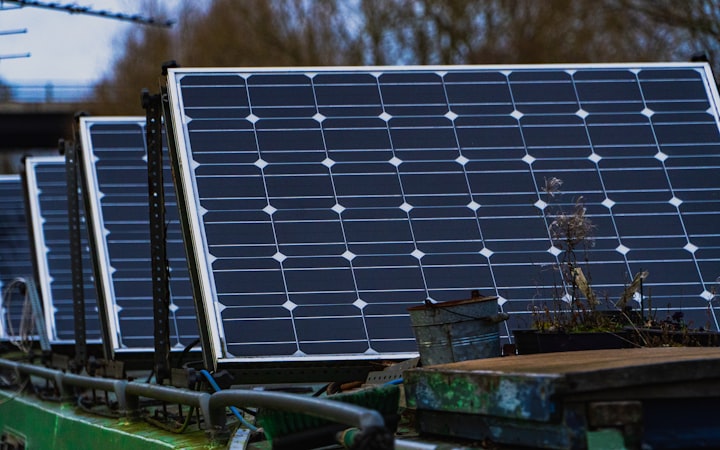
When it comes to renewable fuel sources, the Germans have really taken off, and they've become one of the big participants in the alternative energy business. The German people established a global record in 2006 by investing over $10 billion (US) in research, development, and deployment of wind turbines, biogas power plants, and solar gathering cells under the auspices of the country's electricity feed legislation. Germany's "feed rules" allow German houses to connect to the electrical grid using renewable energy and then sell any excess energy produced back to the power company at retail pricing. This financial incentive has propelled Germany to the top of the world in terms of the number of operating solar arrays, biogas plants, and wind turbines.These renewable energy sources create 50 terawatt hours of power each year, accounting for 10% of Germany's total energy production. Germany deployed 100,000 solar energy harvesting installations in 2006.
In the United States, BP has created the Energy Biosciences Institute (EBI) to lead new research and development initiatives into clean-burning renewable energy sources, particularly biofuels for ground vehicles. Over the next decade, BP will invest $50 million (US) every year. The EBI will be based at the University of Illinois in Urbana-Champaign. The University will work with BP to create novel biofuel crops, biofuel-delivering agricultural systems, and devices to manufacture renewable fuels in liquid form for automotive usage.
The university will be at the forefront of efforts in the field of genetic engineering to develop more improved biofuel crops. Technology breakthroughs for turning heavy hydrocarbons into pollution-free and highly efficient fuels will also be a main focus of the EBI.
In the United States, the fight between Congress and the Geothermal Energy Association continues (GEA). According to the GEA's Executive Director Karl Gawell, scheduling a congressional hearing specifically on geothermal energy, its potential, and the role of federal research is the only way to ensure that DOE and OMB do not simply revert to their irrational insistence on terminating the geothermal research programme. Gawell goes on to say that recent studies by the National Research Council, the Western Governors' Association Clean Energy Task Force, and the Massachusetts Institute of Technology all support increasing geothermal research funding in order to develop the technology needed to harness this vast, underutilised domestic renewable energy resource.
In terms of kilowatt-hours, geothermal energy is already less expensive to create than the coal that the United States continues to mine. Geothermal energy is abundant, lying just a few kilometres beneath our feet and easily accessible through drilling. Ormat, the third biggest geothermal energy generator in the United States with units in various countries, is already a multibillion-dollar enterprise.
We can harness a lot of energy if we only focus on researching and developing the necessary technology. By switching to alternate energy sources, we can break away from fossil fuels and antiquated electrical systems.
Wind power is one of these alternative energy sources. Wind turbines that are more energy efficient and less expensive are still being developed. Wind farms have sprung up in many countries, and they've become better at strategically placing them over time so that they don't endanger birds as previous wind turbines did.
Another alternative energy source is solar energy, which is the most well-known. This entails the creation of solar cells that collect and concentrate the energy emitted directly by the sun and convert it to electricity or, in certain situations, hot water. Solar energy, like wind energy, produces no pollution at all.
Governments and investors perceive ocean wave energy as having immense energy-generating potential. A generator in France has been in operation for many years and is regarded a remarkable success, while experimental facilities are being run in Ireland and Scotland.
Hydroelectric power has been around for a long time, and it is a strong producer of electricity that is cleaner than a grid. However, the availability of suitable locations for constructing a major dam is limited. Due to this constraint, several run-of-the-river, or small and localised, hydroelectric plants have been built in recent years.
Because geothermal energy is found just beneath our feet, just a few miles below the earth's surface, it is abundant. The heating of water caused by the earth's extremely hot molten core generates this energy. The water condenses into steam, which may be utilised to power turbine engines, which create energy. a large amount of
Garbage gas energies, which are primarily methane, work by generating energy from waste in landfills and some air pollutants, reversing the traditional energy-pollution ratio. This gas may be utilised in gasoline generators and is used in fuel cells.
Wheat, sugarcane, grapes, strawberries, corn, and even wood chips and wood cellulose are used to make ethanol, a fuel replacement. There is debate over whether this fuel will ever be genuinely affordable or practicable, save in extremely limited circumstances, although extraction and admixturing technologies are constantly improving.
About the Creator
Zahid Khan
Dentist






Comments
There are no comments for this story
Be the first to respond and start the conversation.